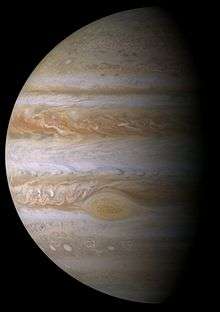Innovative Interstellar Explorer

Innovative Interstellar Explorer was a NASA "Vision Mission" study funded by NASA following a proposal under NRA-03-OSS-01 on 11 September 2003. This study focused on the elusive quest to reach and measure the interstellar medium, the region outside the influence of the nearest star, the Sun.[1] It proposes to use a radioisotope thermal generator to power ion thrusters.[1] The project is a study of a proposed interstellar precursor mission that would probe the nearby interstellar medium and measure the properties of magnetic fields and cosmic rays and their effects on a craft leaving the Solar System.[2] Mission launch plans analyzed direct, one planet, multi-planet, and upper-stage trades.[3]
A variety of plans were proposed, including using launch windows (not counting backups) for a Jupiter assist in 2014, 2026, 2038, and 2050—about every 12 years.[3] The launch opportunity for the 2014 window passed,[4] but for example it could have resulted in a Jupiter flyby by early 2016 and then go on to reach 200 AU by 2044.[3][2] With an ion drive, a speed of about 7.9 AU/yr by the time its xenon propellant was depleted could be attained, enabling that 200 AU by 2044 and perhaps 1000 AU after one hundred years from launch.[3] Different launch times and configurations have various timelines and options.[3]
References
- 1 2 NASA. "Innovative Interstellar Probe".
- 1 2 David, Leonard (July 6, 2005). "Voyage to the Stars: NASA Study Mulls Options". Space.com.
- 1 2 3 4 5 NASA. "Innovative Interstellar Probe : Mission Design Requirements".
- ↑ Gilster, Paul (December 20, 2011). "Update on Innovative Interstellar Explorer".
See also
- Interstellar probe
- TAU mission
- New Horizons (Pluto flyby 2015, now heading out to KBOs)
